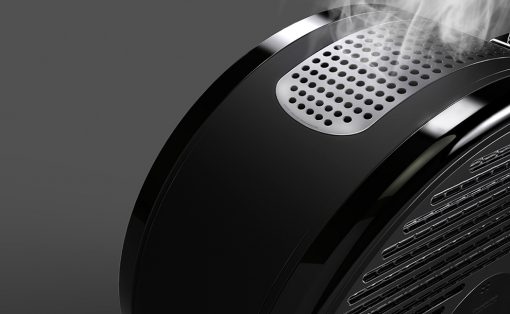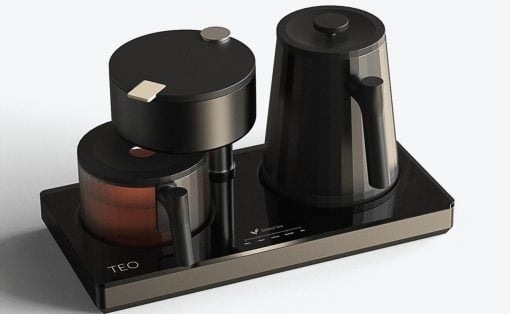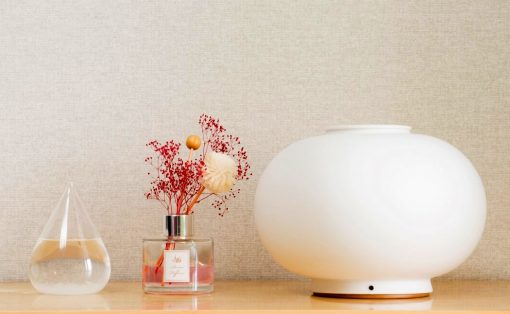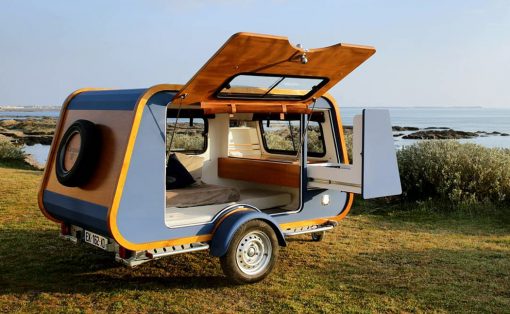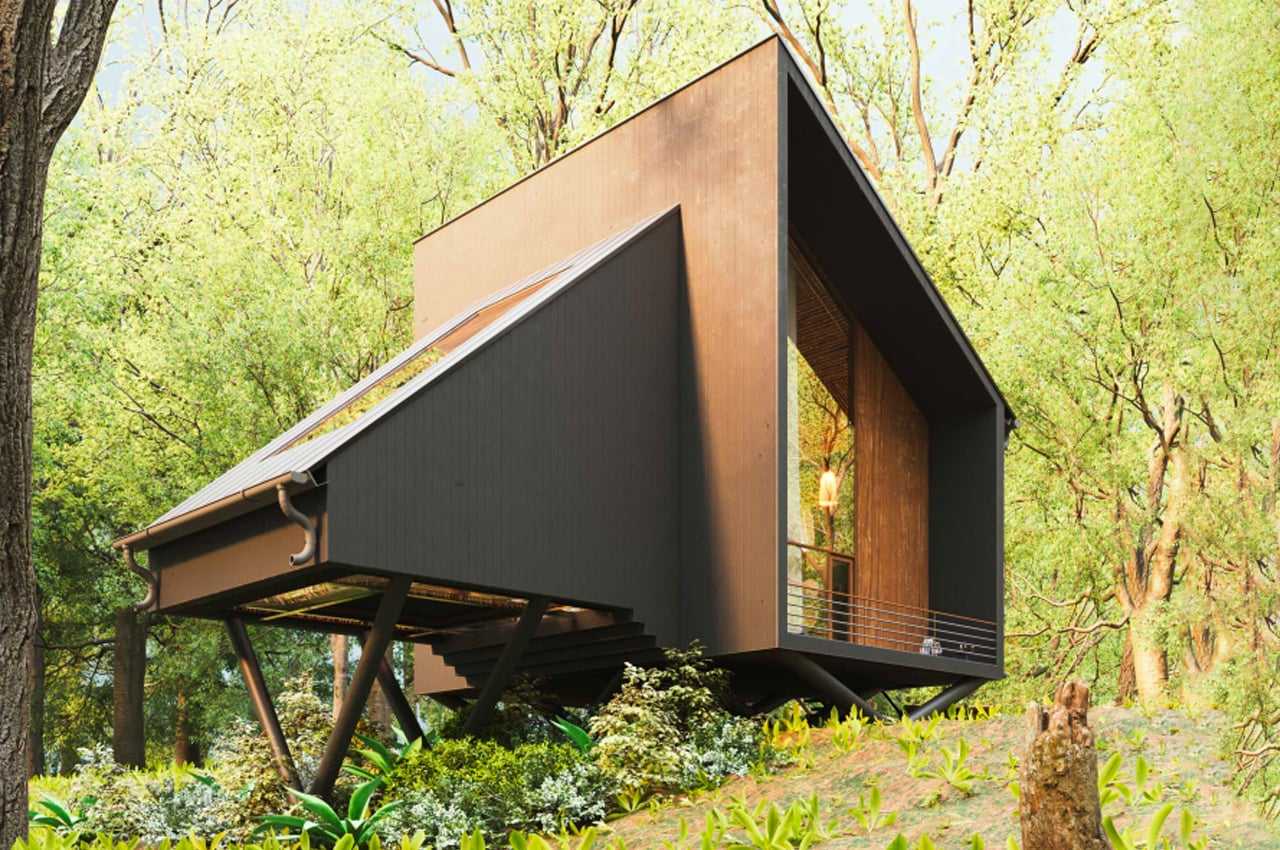
Cabins have been a relaxing and quintessential getaway option for everyone for ages galore. They’re the ultimate safe haven in the midst of nature, if you simply want to get away from your hectic city lives, and unwind. If you want a simple and minimal vacation, that lets you truly connect with nature, without any of the materialistic luxuries most of us have gotten accustomed to, then a cabin retreat is the answer for you! And, we’ve curated some beautiful and super comfortable cabins that’ll be the perfect travel destination for you. From a self-sufficient cabin that is a green retreat in the forest to a sustainable and self-build Climber’s cabin – these mesmerizing and surreal cabins are the ultimate retreat, you’ve been searching for!
1. The Slope House
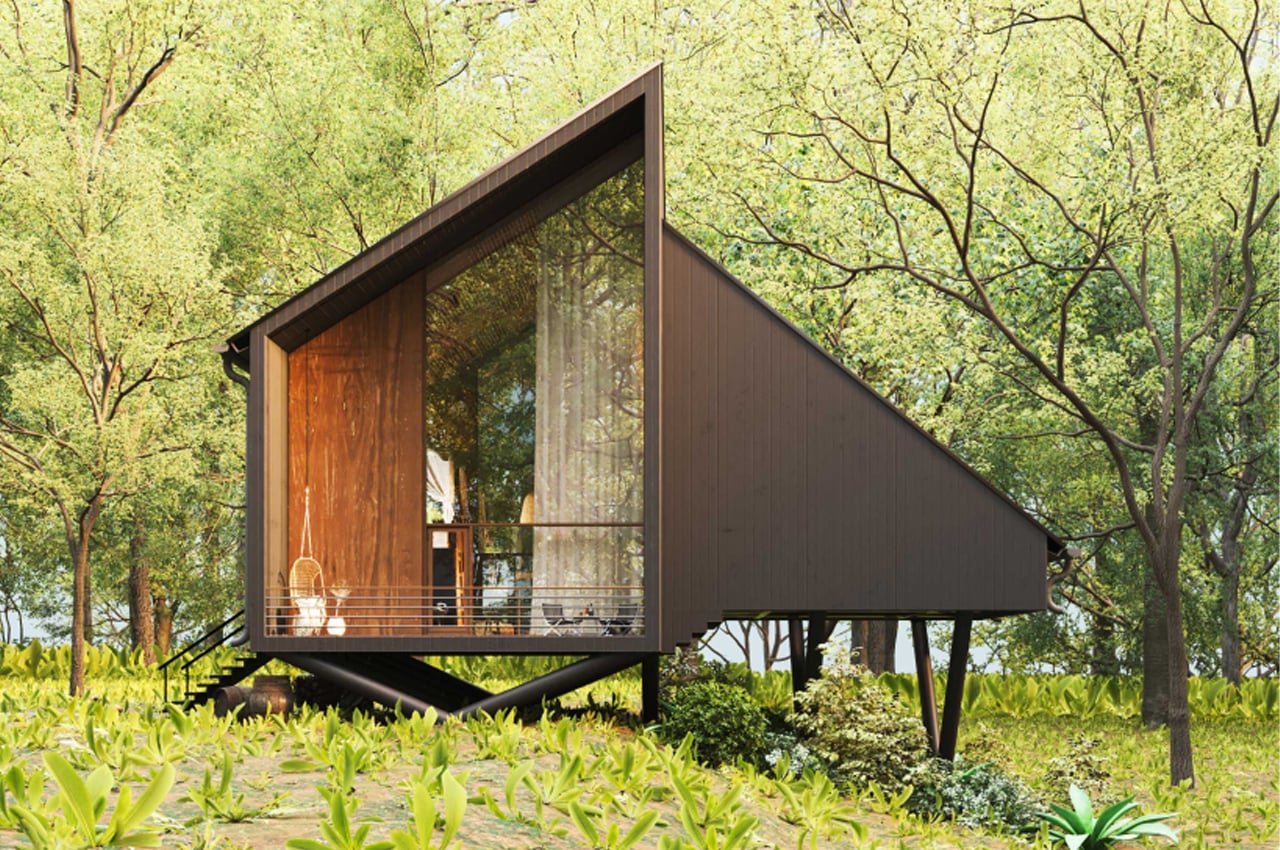
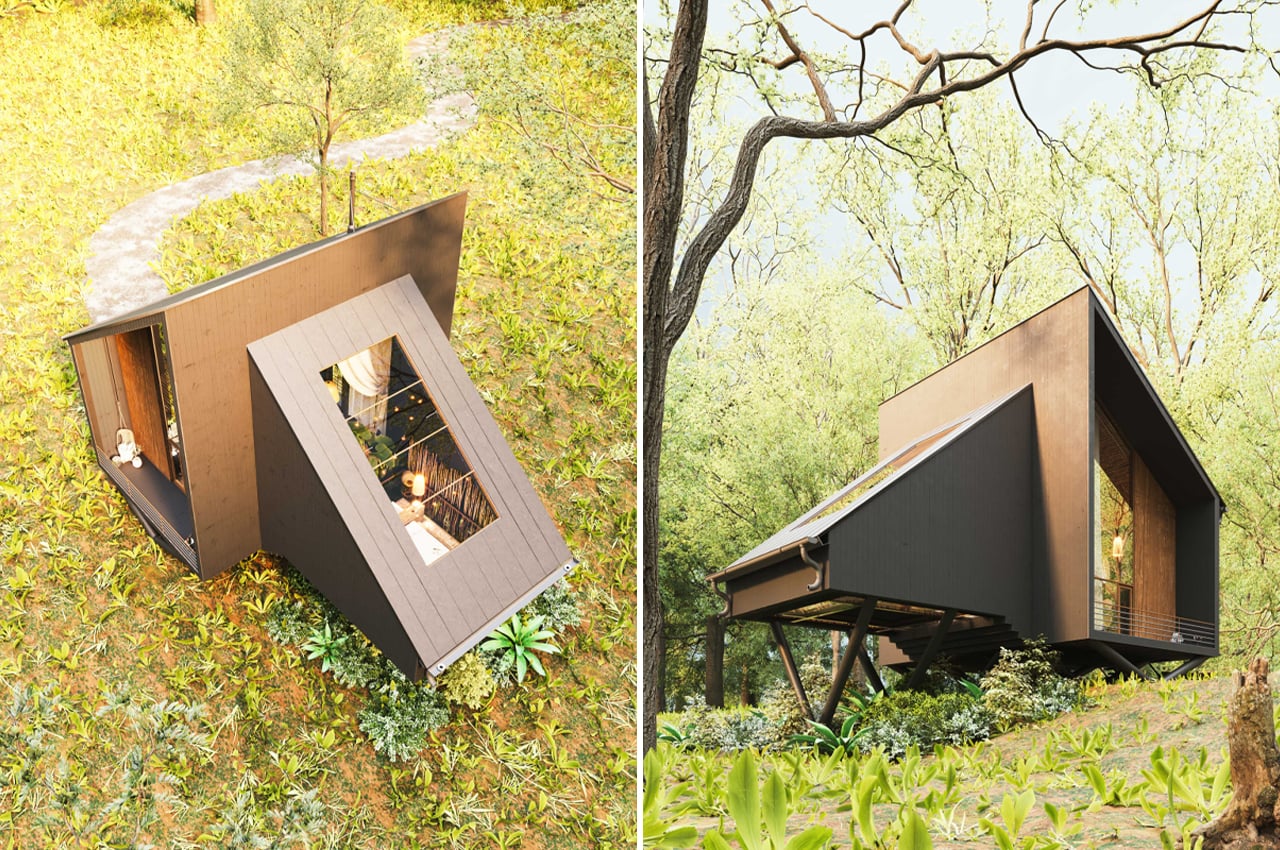
The Slope House from the 3D visualizer Milad Eshtiyaghi is an untraditional A-frame cabin that employs biophilic design inside and out. 3D visualizer and international architect Milad Eshtiyaghi has long been drawn to escapist hideaways perched on rugged, seaside cliffs and isolated cabins envisioned beneath the Northern Lights. Today, he turns his gaze to tiny cabins. A bit more quaint than treacherous, Eshtiyaghi’s latest 3D visualization finds an angular, timber cabin nestled atop an idyllic hillside somewhere in the rainforests of Brazil.
Why is it noteworthy?
Dubbed the Slope House, the timber cabin maintains a signature triangular frame that’s a thoughtful twist on the conventional A-frame cabin. Defined by two modules, one internal volume hosts the cabin’s bedroom while the other keeps the home’s main living spaces, like the dining area, kitchen, and den. The tiny cabin from Eshtiyaghi is envisioned propped atop a truss system that was specifically chosen to minimize the home’s impact on the preexisting landscape.
What we like
- A biophilic design style has been integrated into the cabin’s interior spaces
- Natural plants have been added inside the house as a small garden
What we dislike
- The theme and form of the home may be a bit too eccentric for some
2. Jacobschang Architecture’s tree house


This minimalist 360-square-foot cabin is supported by the trees surrounding it and was constructed using a minimal budget and with most of the work to be done above ground. The most expensive part of the structure is the three 8×8 steel-tube pivot doors which were actually created off-site and installed together with dual-insulated glass panels.
Why is it noteworthy?
The framing of the cabin uses standard nominal lumber, while the perimeter uses engineered wood beams. In order to balance the house on the upslope corners and between the two trees, they used Sonotube footings and Garnier Limbs to distribute the weight of the entire structure. Although some of the eastern pines were cut down, they were used to create the exterior and interior boards of the treehouse after they were milled and kiln-dried.
What we like
- The exterior boards are coated with Scandinavian pine tar to give them extra protection
- Let’s you relive your childhood dream of having a treehouse
What we dislike
- You can’t live there for a long period of time
3. The ZeroCabin


Two sisters in Chile got the ZeroCabin crew to help create their dream retreat in a forest in the Lake District. The cabin faces the sea on the east and then on the west, you can see a 70-meter tall hill so you get a perfect view either way.
Why is it noteworthy?
They designed the north facade to have open windows and expanded the east facade to allow more sun to illuminate the house obliquely. And since the area has extreme humidity during the winter, they elevated the cabin 1.5 meters above the ground. The 1,184-square-foot cabin has three bedrooms, two bathrooms, a kitchen and living area on the ground floor, and a loft on the third floor.
What we like
- This ZeroCabin Krul uses timber as a frame for the entire structure but with structural insulated panels with pulverized cardboard
- The cabin is built to be green and so it uses a two-kilowatt solar system for its electrical needs and a five-cycle system that collects rainwater for its water needs
What we dislike
- No complaints!
4. Buster


Buster is located in Matamata, just a couple of hours away from Auckland, New Zealand. You will be able to hear the sound of spring river water flowing around you as you’re surrounded by trees, stones, valleys, and basically the joys of nature. It’s located below the Kaimai Range “amongst ancient native bush and farmland”. It is a tiny home perfect for one person or a couple who wants to temporarily or even permanently live in such an area and to have something that is built sustainably and with the environment and your comfort in mind.
Why is it noteworthy?
Instead of being made from timber, it uses black corrugate as it will last longer and can survive all the different kinds of weather that the area experiences. They also used plywood to bring “a sense of warmth” to the house and is in fact what is also used in the traditional kiwi trampers huts, giving you even more of a local feel but with modern conveniences. It’s a pretty good combination, having a more natural lodging but using sustainable technology and devices to give you comfort and function.
What we like
- Buster is powered by GridFree solar panels
- The house is oriented to the north so that it will be able to maximize the light during the summer and even during the winter
What we dislike
- The solar energy is only enough to power a small fridge, and lights, and to charge your smartphones
5. Air Bee & Bee


Cutely called Air Bee & Bee (and listed on Air BnB), the house, or more specifically, the self-standing room, is located on an olive farm in a village called Grottole. The room fits two people, and the house itself has an exterior that looks like a honeycomb.
Why is it noteworthy?
Aside from just having a bee theme, there are actually nine apiaries or beehive boxes surrounding you. There is even one of those boxes hanging from the ceiling near your bed. So if you’re a bit scared of bees, then this is definitely not somewhere you should go to.
What we like
- To give you the complete bee experience, the owner, who is also the beekeeper, will give you lessons about the importance of bees
- The goal, aside from having a cool Air BnB listing, is to spread more awareness about bees
What we dislike
- No complaints!
6. The Beach Cabin
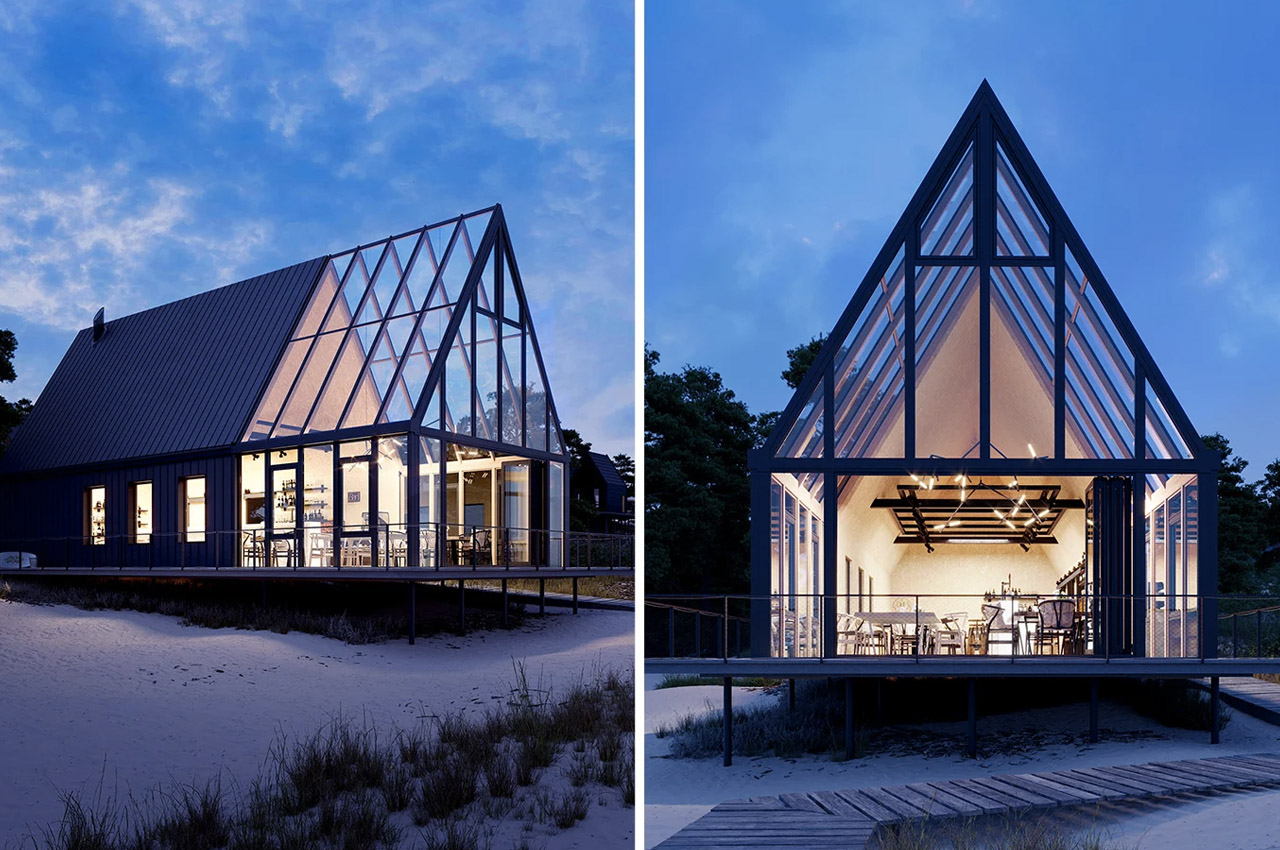
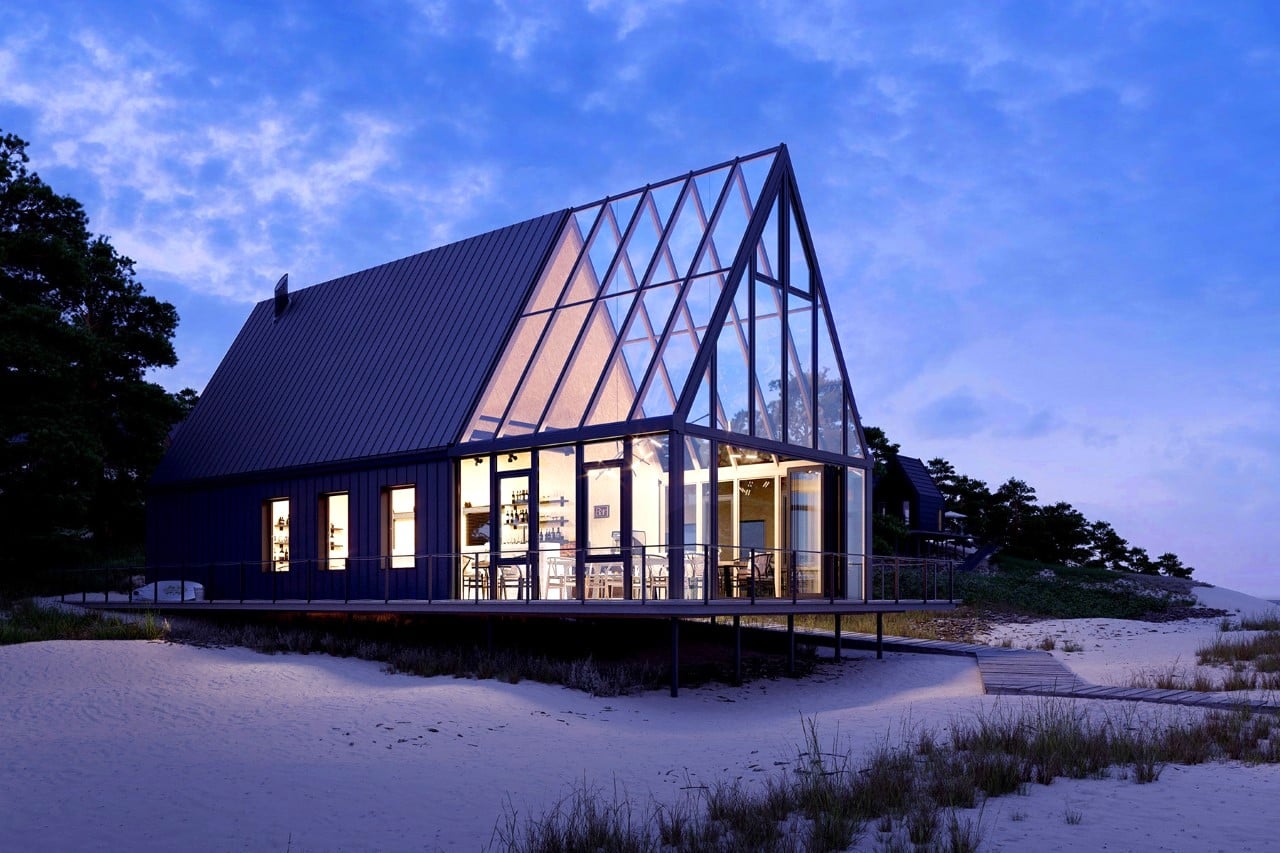
Part cabin part conservatory, the Beach Cabin on the Baltic Sea by Peter Kuczia offers the most stunning panoramic views of the beach. This small gastronomy facility located in north Poland near Gdansk boasts of a simple form that fits naturally into the beach environment but stands out thanks to its bold design.
Why is it noteworthy?
The cabin comes in two parts – an enclosed space on the side, and a vast, open living/dining area that provides shelter along with an abundance of natural light. This dining area is further split into two, with one half made in the traditional style of a cabin, while the other half is constructed entirely out of glass. This glass facade gives onlookers an absolutely sublime view of the ocean, the shoreline, and even the sky above!
What we like
- It literally floats above the sand
- Offers the most beautiful panoramic view
What we dislike
- No complaints!
7. The Climber’s Cabin
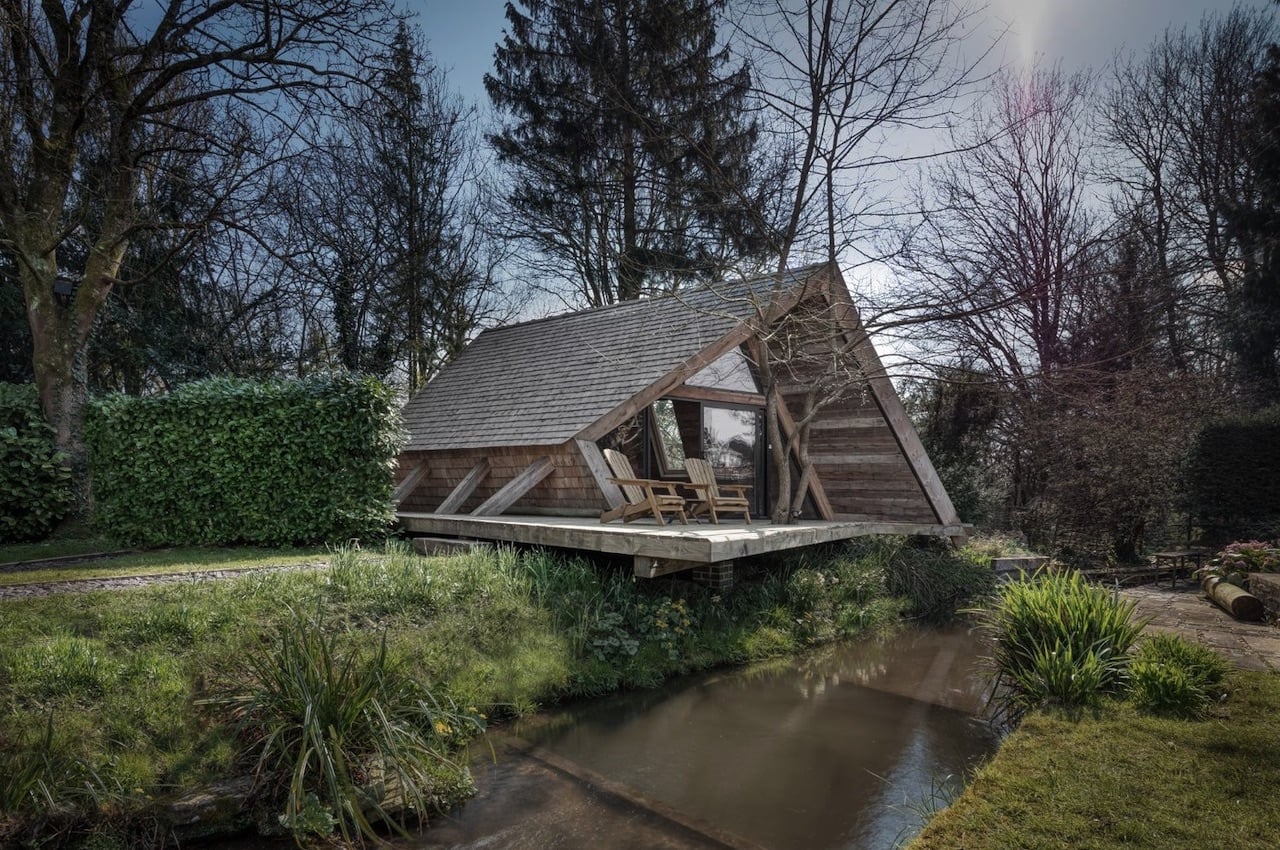
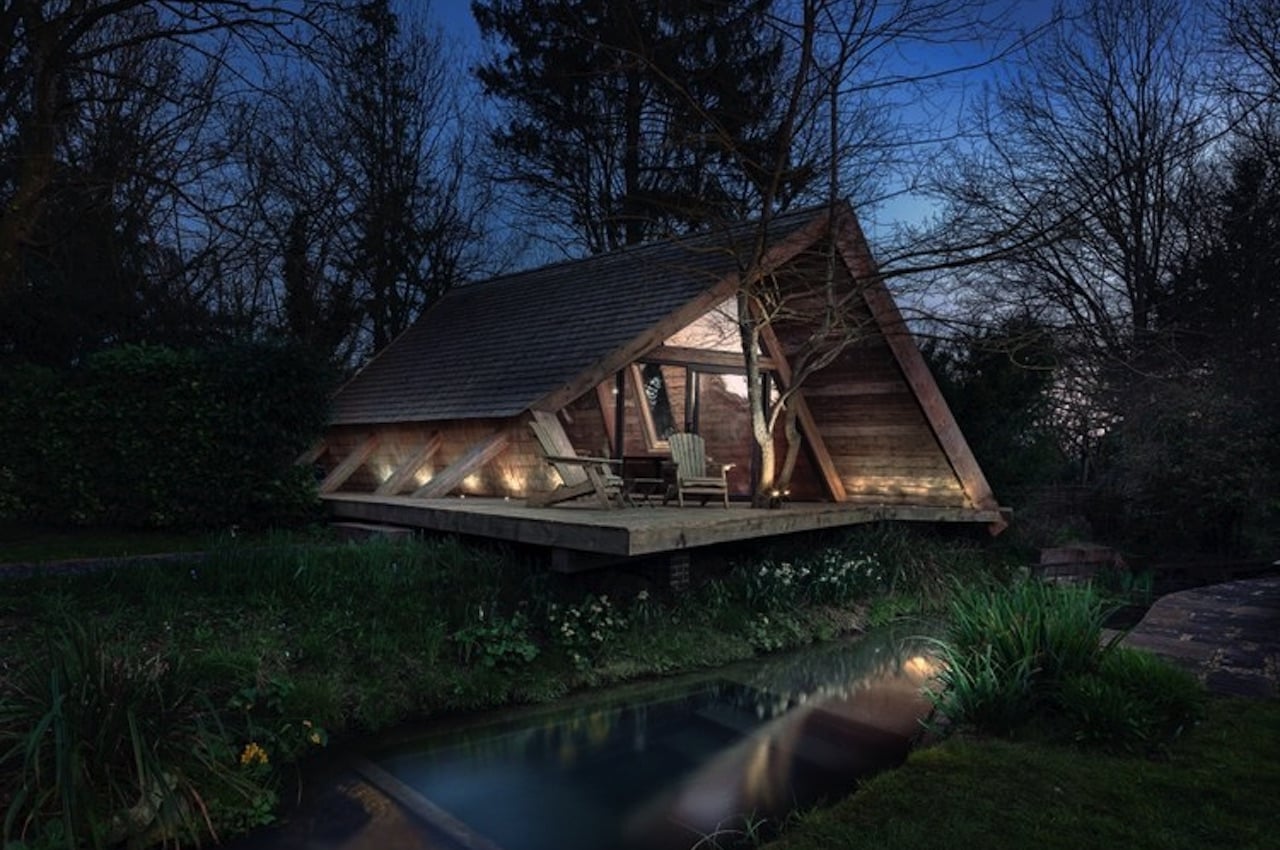
We have seen Several interesting units, but we believe more well-designed cabins will be introduced. The latest on our radar is The Climber’s Cabin by AR Design Studio. As described, its primary purpose is as a space for children and as a guest cabin for when you want to entertain friends and family.
Why is it noteworthy?
The Climber’s Cabin is situated near a stream and a woodland, adding to the adventure experience. The initial plan for the cabin was for it to function as ancillary space for the client’s house. The idea was that the cabin would be built quickly without any complex construction methods. Every step was supposed to be straightforward, so anyone could easily understand and follow. Construction should also be done using sustainable materials sourced locally. The project was actually born during those early months of lockdowns due to the pandemic.
What we like
- The A-shaped roof was optimized to allow a mezzanine
- Inside The Climber’s Cabin, interior finishes are made of used and upcycled boards
What we dislike
- No complaints!
8. Container House
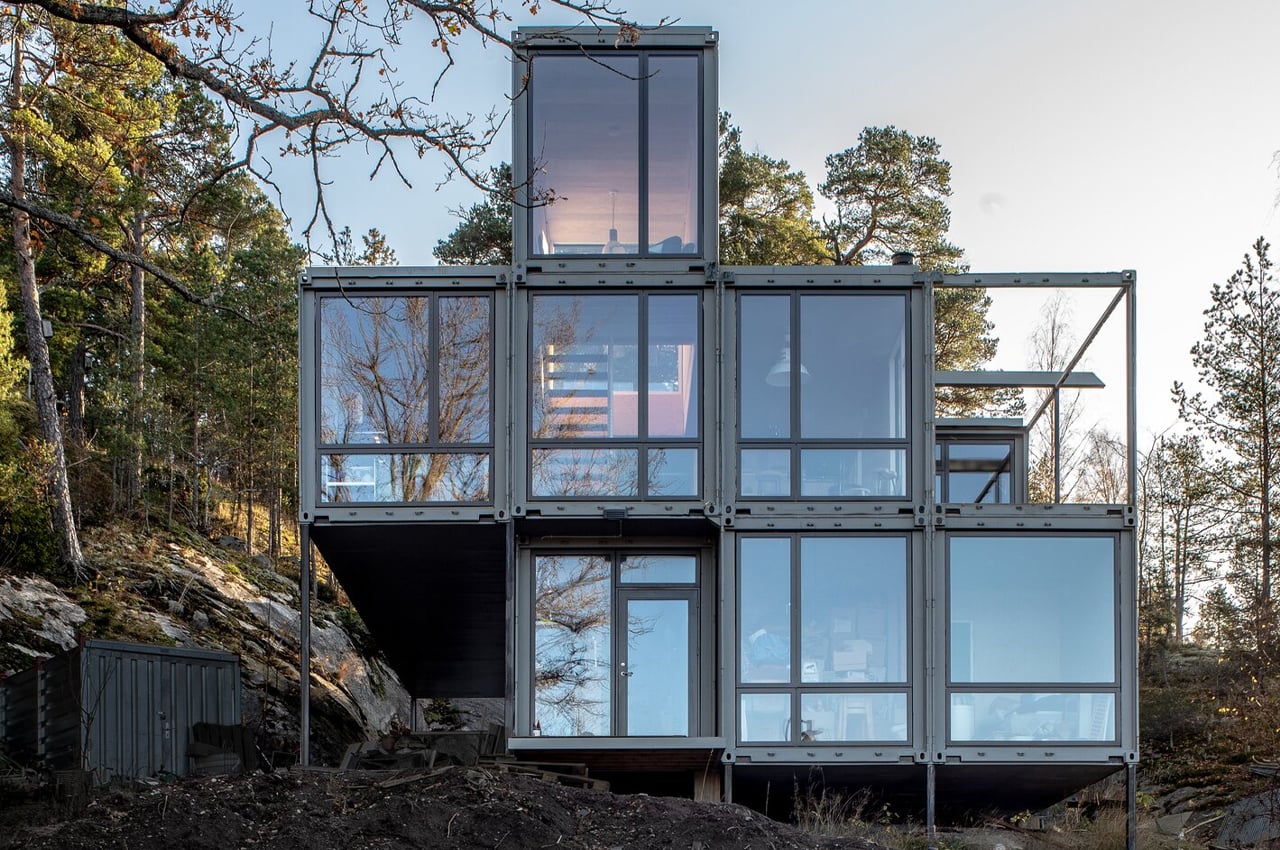
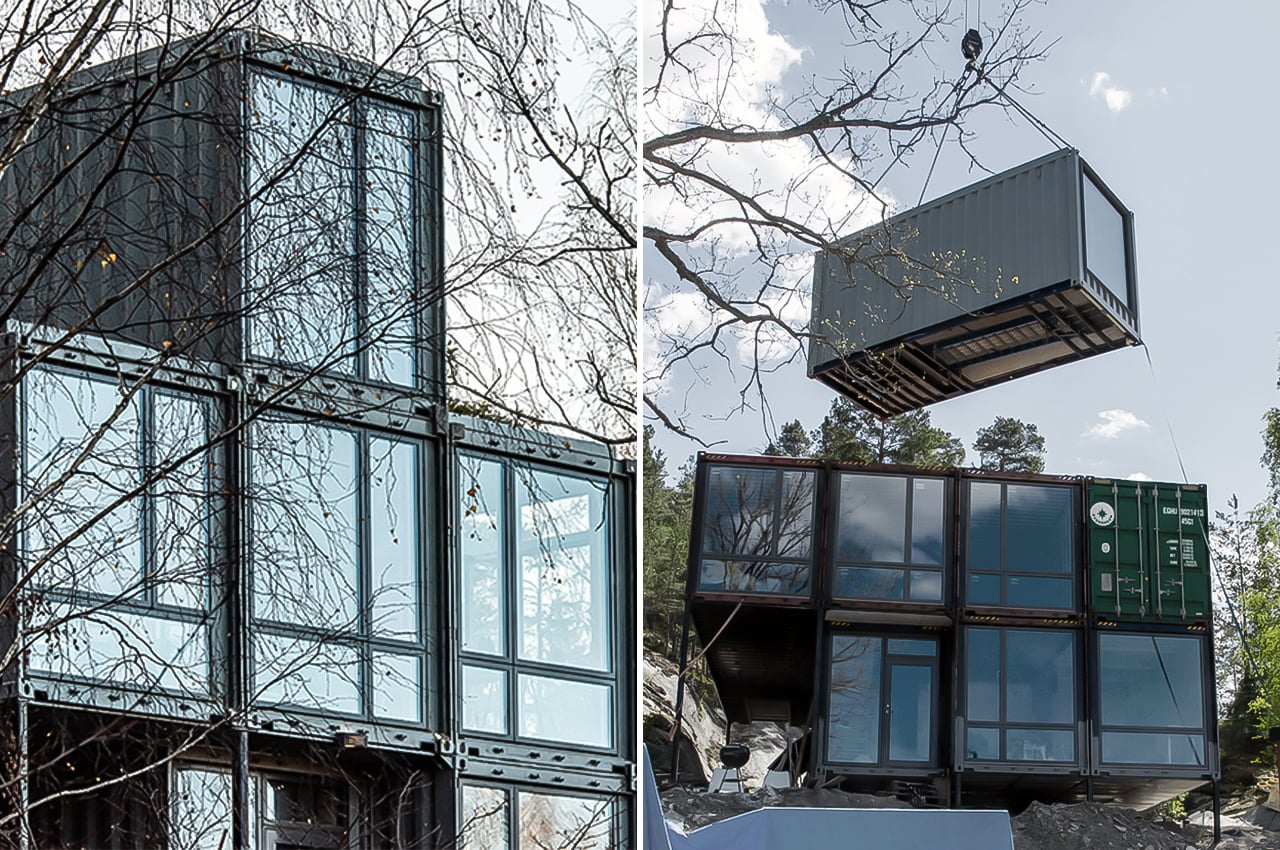
Inspired by their interest in customized American cars, Tham’s clients felt a connection to the DIY nature of turning shipping containers into modular homes. In addition to the natural connection they felt to shipping container architecture, the couple chose to build with shipping containers for their sustainable appeal, flexibility, and prefabricated structural integrity. Generally speaking, all of this allows architects to build shipping container homes quickly, but that’s not always the case. For Container House, it took just about three years to reach completion. Built on a steep cliffside, Container House’s chosen location brought some challenges with it.
Why is it noteworthy?
Container House is a modular family residence near Stockholm, Sweden that’s built from eight shipping containers. Shipping containers give new meaning to modular home design. Chosen for its structural integrity and prefabricated build, the shipping container is a sustainable and long-lasting choice for home builders. Måns Tham, architect and founder of Måns Tham Arkitektkontor, recently finished work on a multi-year, shipping container project that’s home to a family of five. Completed with eight 20′ and 40′ disused high-cube shipping containers, the residence gives rise to a geometric monolith posed on a steep lot near a lake outside Stockholm.
What we like
- Inspired by customized American cars
- A single shipping container functions as a lookout level for residents to bask in the views of the rugged cliffside and nearby lake
What we dislike
- No complaints!
9. The River House
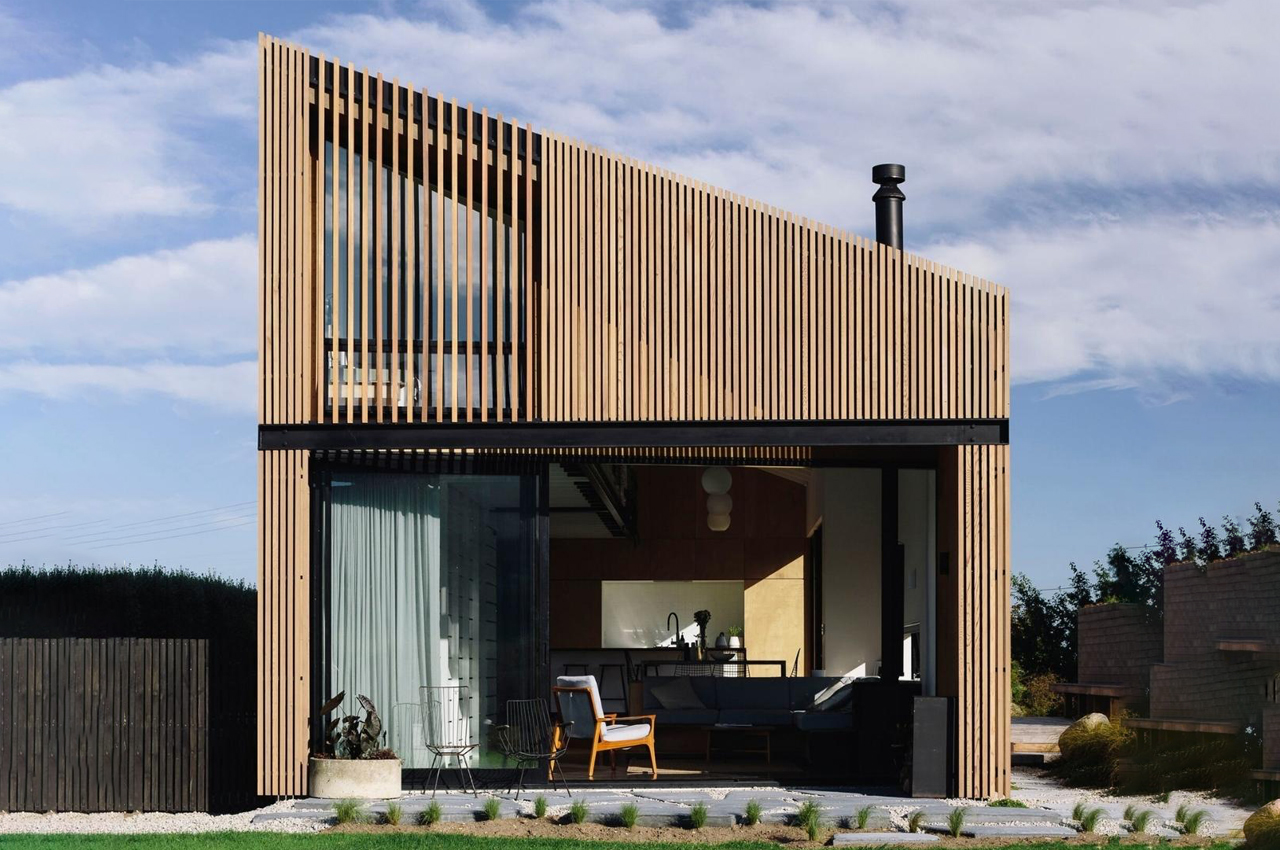
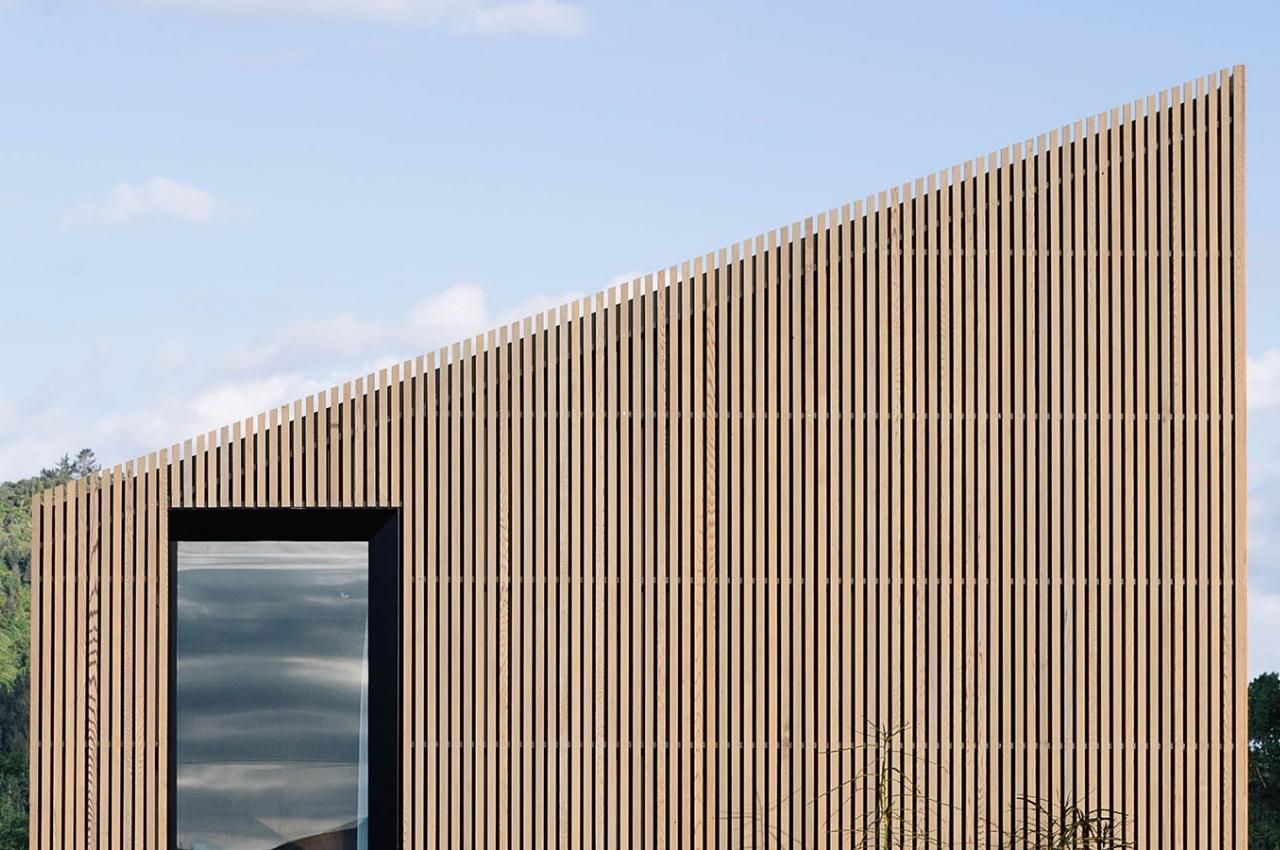
A New Zealand-based architect was able to build his dream home for his family with the idea that their holiday home, known as a “kiwi bach” is not just a space but also turns the outside landscape into an extension of it. He found a space in the 450-resident regional township of Taupiri, an hour south of Auckland, overlooking the Waikato River and the Hakarimata mountains, and turned it into the River House. For those that grew up in cities and want to escape the bustle, this seems to be a perfect spot.
Why is it noteworthy?
The idea is to create a laid-back living kind of house and at the same time use a small footprint for both budgetary and ecological concerns. The 1,065 square feet house with a 270 square feet second floor uses two essential materials – plasterboard and pine, as well as Resene paint for the walls. These materials were painted white, while those that use aluminum or steel were painted black. The timber paneling and flooring retained their natural colors, giving the entire house a minimalist look and, at the same time, complementing the outdoor ambiance.
What we like
- Perfect spot to escape the hustle-bustle of the city
- A laid-back and peaceful living space
What we dislike
- No complaints!
10. OM-1


Don’t you just wish sometimes that you could “build” a house online and then order it just the way you like it? Well, now you actually can to some extent as a company called Dimensions X is aiming to be the Tesla of prefabricated homes. Plus, just like the environmentally friendly car company whose model they are following, the houses they will be offering homes that are energy efficient and will offer less carbon footprint.
Why is it noteworthy?
Australian entrepreneur Oscar Martin partnered with architect Peter Stutchbury to create a company that can offer people their prefabricated homes with a few clicks on their website. The process isn’t yet as simple as ordering a Tesla but they do have an online configurator that will tell you how much it will cost you as soon as you build your prefab home and make certain changes to it. There are modules and elements that you can modify to make it your own.
What we like
- Energy-efficient home with a small carbon footprint
- You can choose things like the length and size of the entire house as well as placements of doors and windows, finishes, orientations, and other elements that you can personalize
What we dislike
- No complaints!



